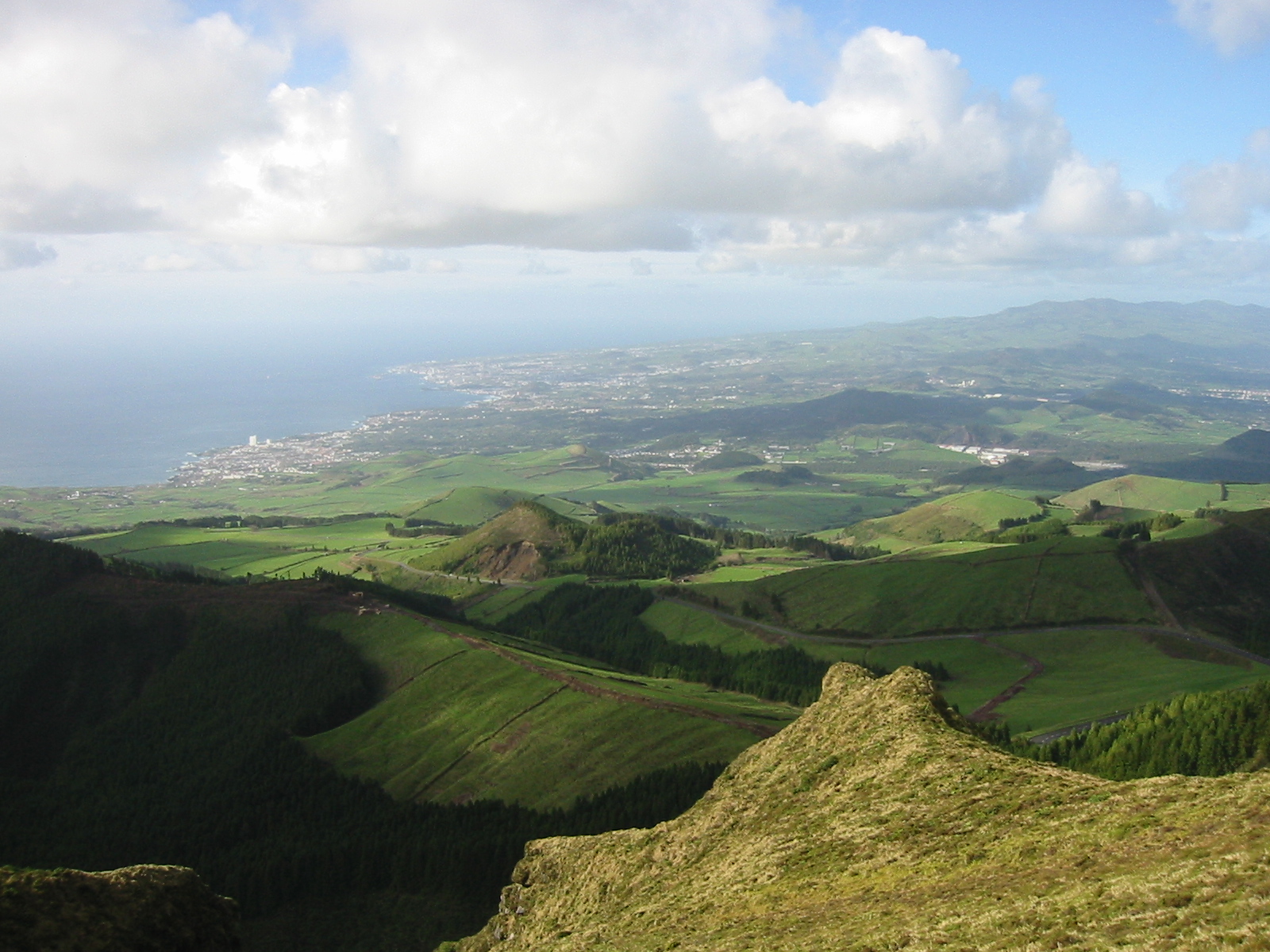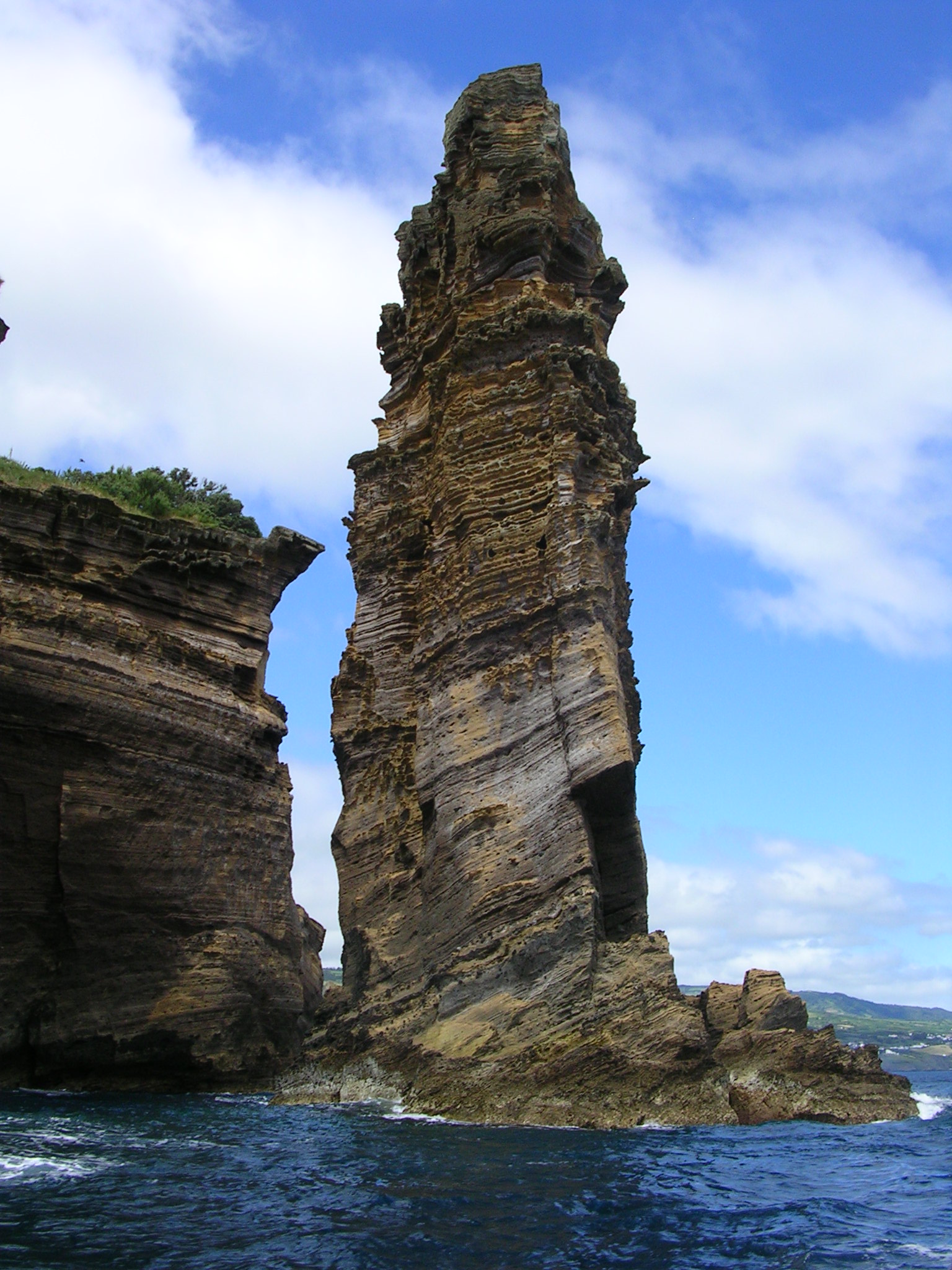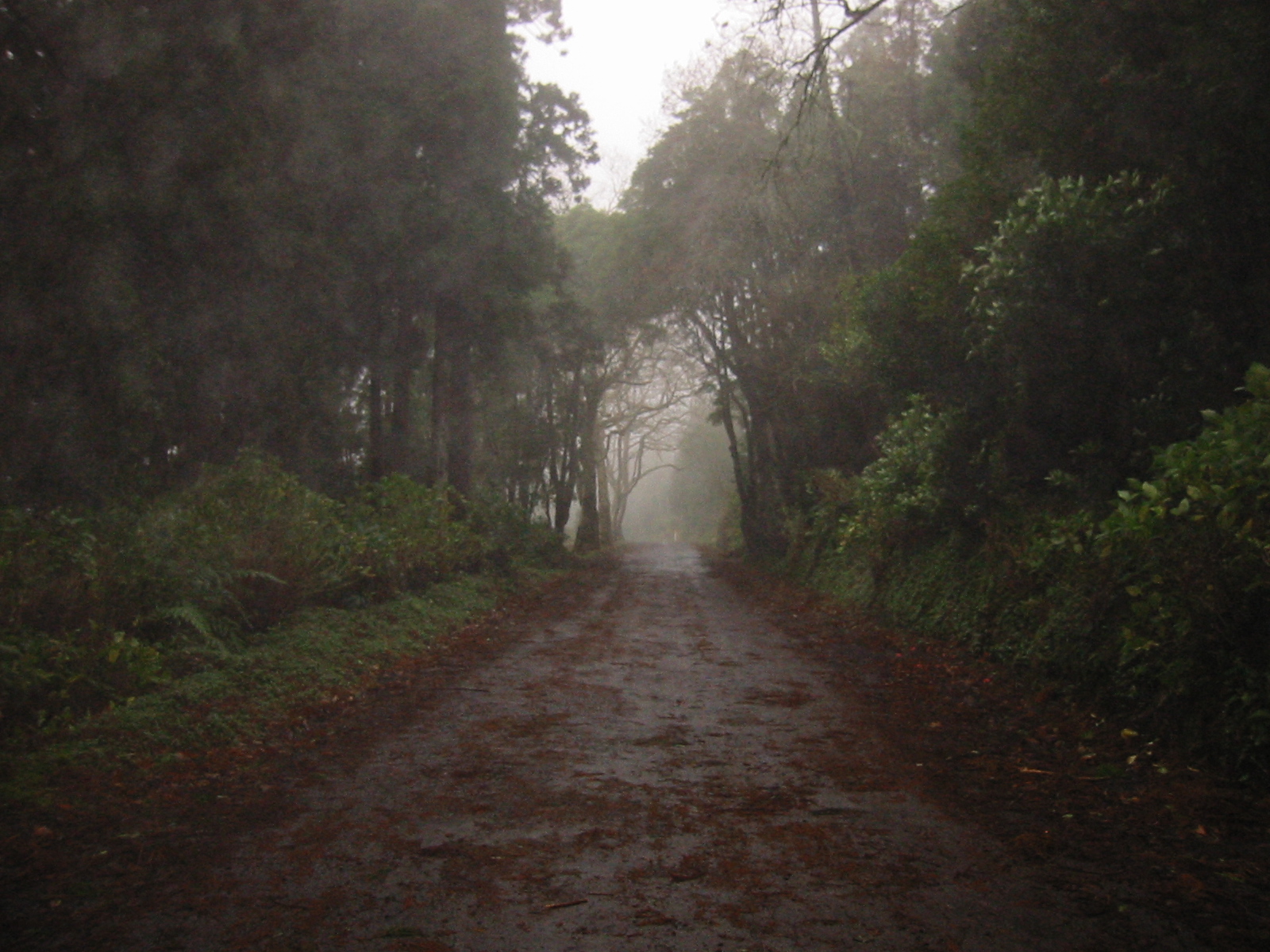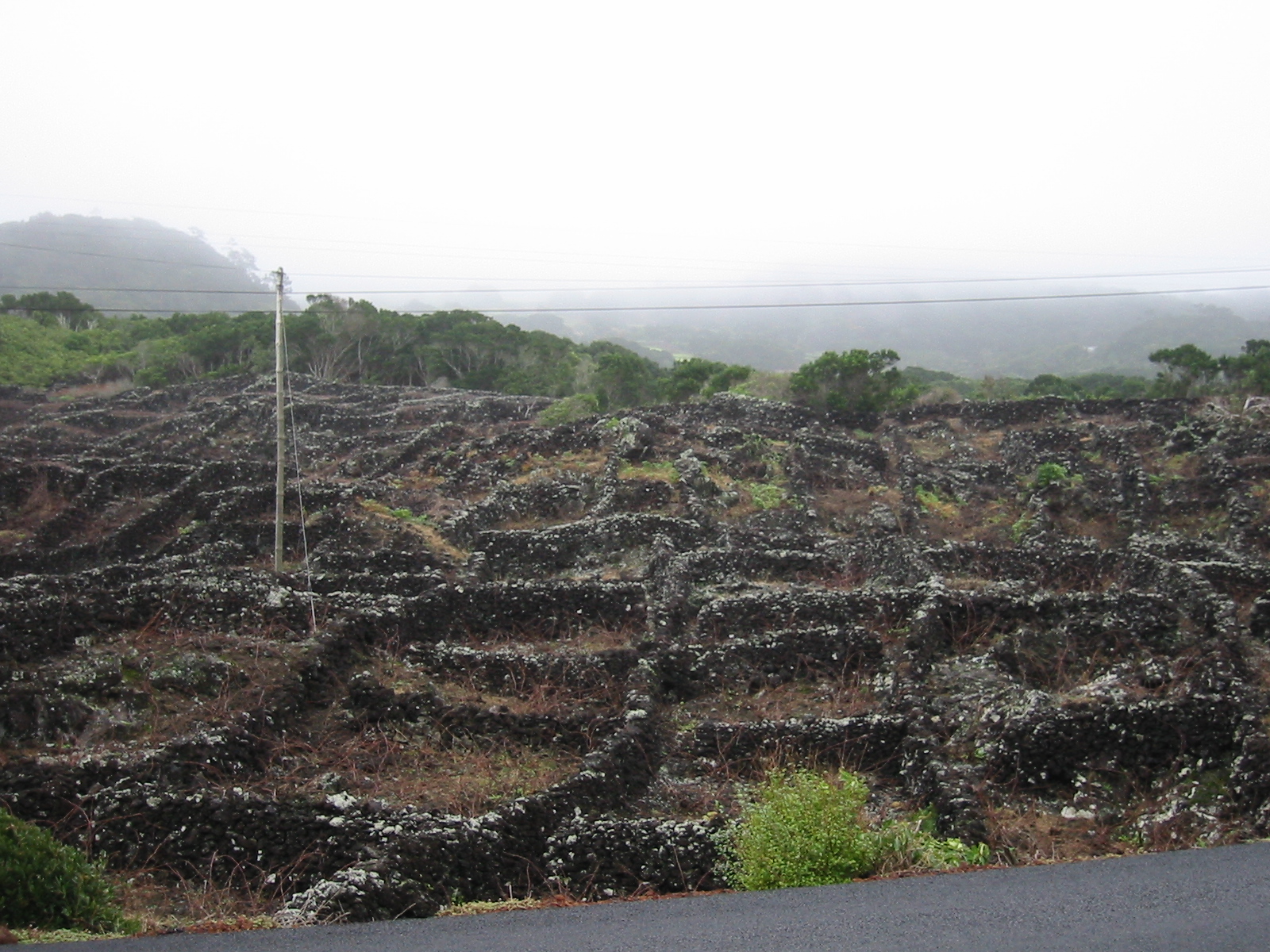|
The nine islands of
the Azores are not just some of the most beautiful islands in
the world, they are also the birthplace of Ana's parents John
& Maria!! The Azores are a
relatively unknown tourist destination, likely due to their
isolated location in the middle of the Atlantic. This is
sure to change in the future as these beautiful islands offer
an incredible variety of things to do and see. The
attractions range from volcanoes and hot springs to delicious
and cheap food and wine.
We have done several trips to the Azores in both summer and
winter from 2005 to as recently as 2012, for a
daily rundown of those trips and a bunch more pictures have a look
at our blog. Click here to read our 2005 Trip guide.
Geography
The Azores are a set of nine volcanic islands located
approximately in the middle of th e Atlantic ocean, south of
Iceland and north of the Canary Islands and Madeira. The
largest and most populated island is San Miguel and the
smallest is Corvo with a population of 400 people. The
capital city Ponta Delgada is located on San Miguel and is
home to about half of the Azorean population. e Atlantic ocean, south of
Iceland and north of the Canary Islands and Madeira. The
largest and most populated island is San Miguel and the
smallest is Corvo with a population of 400 people. The
capital city Ponta Delgada is located on San Miguel and is
home to about half of the Azorean population.
Where to Stay
If you are a Portuguese Canadian or American you likely
have relatives in the Azores so stay with them! For the
rest of you who are "pure" tourists, you have a few
places to choose from. We visited three islands - San
Miguel, Pico, and Faial and got the impression that the
selection of places to stay is really not that great.
Most of the places we saw were mid range hotels, but there did
not seem to be a good selection of bed and breakfasts or
country inns. The one place we did find and can recommend is a
beautiful coastal inn in Pico called Aldeje da Fonte.
The Climate
The climate in the Azores is wonderfully mild though can be
rainy and windy at times. The average January
temperature is around 15C and the average temperate for July
is around 22C. With these temperatures the islands are
green all year round and very pleasant.
The Money
As of January 1, 2002, the official currency for
Portugal and the Azores is the Euro which replaces the old
currency Escudos. The exchange rate is 200 Escudos per
Euro.
Places to Eat
The best option is
to eat at your aunt and uncle's house. If you don't have
an aunt or uncle perhaps you could quickly make some Azorean
friends and invite yourself over to their place for
meals. Failing that...there aren't too many
options. For many years the Azores has been quite a poor
place and therefore there is not much of a "eating
out" culture. The places you will normally find are
cafeteria-type lunch venues which serve decent local food at
very low prices. As well, the
Especial
beers are extremely cheap at these places with a half litre of
brew setting you back only 1 Euro. It was
quite surprising to us walking around in the centre of Ponta
Delgada and finding hardly any restaurants. There a re
plenty of shops and it really feels like a small, modern
European city...except for the lack of restaurants. re
plenty of shops and it really feels like a small, modern
European city...except for the lack of restaurants.
Things to Do on the
Islands
Since we only
visited three of the islands, I'll discuss each of them in
turn as they are all quite different from each other and offer
different things to do. The common thread which you will
notice in every part of the Azores you explore is that they
LOVE TO SMOKE. I have never seen a place where so many
people smoke. By my estimates, the percentage who are
smokers by age/gender group are the following:
Adult men >16
years of age = 100%
Adult women >16 years of age = 100%
Children <16 years of age = 80%
May not be quite
that bad, but it really shocked me. That is pretty much
the only complaint I have about the whole country. But
if you are a smoker...hey, go for it!
San Miguel
This is the largest and most populated island of the Azores
containing more than half of all inhabitants. There is
an amazing range of things to do and see in San Miguel and is
likely a tourist's first stop since there are a much better
selection of accommodation and restaurants here than the other
islands. We rented a car and did a fair bit of exploring
around the island, though we were far from seeing everything
there was to see. Here are some of the places we
visited:
Ponta Delgada
This is
the capital city of the Azores and is home to half the
residents of San Miguel. It is a lovely European city
with cobbled streets, interesting architecture, a large
harbour and a beautiful boardwalk along the sea. There
are plenty of shops and even a modern, enclosed shopping mall.
It is a great city for strolling around as it is very safe and
easy to navigate. The one thing conspicuously absent are
the American fast food chains. That's right, no
McDonalds, no KFC, and no Burger King. Now how many
European cities, nay, cities anywhere can make that claim?
Furnas
On the eastern side of the island you'll find these these
popular hot springs. There is a central park which has
bubbling pools of various temperatures, a warm river, and some
crazy gurgling mud holes that emit a sulpher stink that hurts
your nose (but must be good for you!). Nearby this park
is another one which has a huge hot pool for bathing.
Unfortunately we forgot our swimsuits so we couldn't try it
out but it did look very nice. Some of the restaurants
in town serve a special stew which is actually prepared by
putting all the ingredients into a pot and lowering it into
the ground where it cooks in the hot water and steam.
 These
must be ordered many hours in advance. These
must be ordered many hours in advance.
Sete Cidades
If you have seen any pictures from the Azores in tourist
publications you have surely seen this one. It is a
small village nestled between two beautiful crater lakes; one
blue coloured and the other green. I'm not sure why the
lakes are different colours but I assume it has something to
do with the vegetation or perhaps the depth. The view
from above is magnificent and I can imagine canoeing on the
lakes would be very nice.
Lagoa do Fogo
This is another lovely crater lake, close to the village of
Lagoa and definitely worth a trip. It is often cloudy
here so we had to go a couple times before we got the full
vista.
Lagoa Pools
These are a set of natural ocean pools on the seafront in the
town of Lagoa. They are constantly refreshed by the sea
and very pretty. There are a number of other places on
San Miguel and the other islands which have similar rocky
outcrops from which these natural pools are made.
Tea Factory
There are two tea factories (can't remember the names) which
are on the north side of the island east of the town of
Ribiera Grande and are the only tea plantations in Europe!
They offer free tours at both which end in a free cup of tea
and biscuits. They have a small shop where you can buy
fresh tea (called "cha" in Portuguese) and we picked up
several bags which we drank for months.
Island Tours off Villa Franca
There is a beautiful island off Villa Franca where you can
visit during the summer months on a day trip. The island
has a natural harbour and a lovely beach.
Faial
We took a flight
from San Miguel to the island of Faial for one of our famous
"vacation within the vacation" trips! The domestic
flight was quite reasonable, around 120 euros, but due to the
high winds was very much like a theme park ride. Once
arrived, we rented a car and drove into the main town, Horta,
which is a pretty and very colourful harbour town. Horta
is the main stop for sailors cruising across the Atlantic,
making this a real sailor's town. The main drinking hole
is called Peter's Cafe Sport and is renowned by cruisers
worldwide, less for the actual bar with its cigarette smoke
blackened walls and decrepit furnishings and more for its
geographical location in the middle on the Atlantic with land
and the associated alcohol serving premises many days away on
all sides. After Horta, we embarked on a trip around the
island on the coastal road. There were many, many places
along the way where we stopped for views and photos, including
the striking black and white churches, the whalebone scrimshaw
artist's house overlooking Horta, the waterfalls on the
islands west coast and the volcano-trashed lighthouse which
was absolutely mesmerizing.
Pico
Pico is a volcano island thirty minute by ferry from Faial.
On a clear day one can see the magnificent volcano rising
majestically into the sky all the way from Faial. This
island itself basically has
 one
road that follows the coast and encircles the volcano.
There are a few secondary roads where you can drive most of
the way to the top of the volcano, but you need a clear day
for this or you won't see too much. The other amazing
thing about the island is the abundance of volcano rock fences
which divide up the land. Apparently, when the land was
first settled it was entirely covered with rock so the
settlers piled these rocks into fences to get to the soil
underneath. And they actually managed to find a species
of wine grape that could grow entirely along the ground in
these unusual conditions. They also used the excess rock
to build their houses and other buildings which results in
some interesting looking farms. Pico also had a whaling
factory which has since been turned into a museum and this is
definitely worth a visit. one
road that follows the coast and encircles the volcano.
There are a few secondary roads where you can drive most of
the way to the top of the volcano, but you need a clear day
for this or you won't see too much. The other amazing
thing about the island is the abundance of volcano rock fences
which divide up the land. Apparently, when the land was
first settled it was entirely covered with rock so the
settlers piled these rocks into fences to get to the soil
underneath. And they actually managed to find a species
of wine grape that could grow entirely along the ground in
these unusual conditions. They also used the excess rock
to build their houses and other buildings which results in
some interesting looking farms. Pico also had a whaling
factory which has since been turned into a museum and this is
definitely worth a visit.
|
